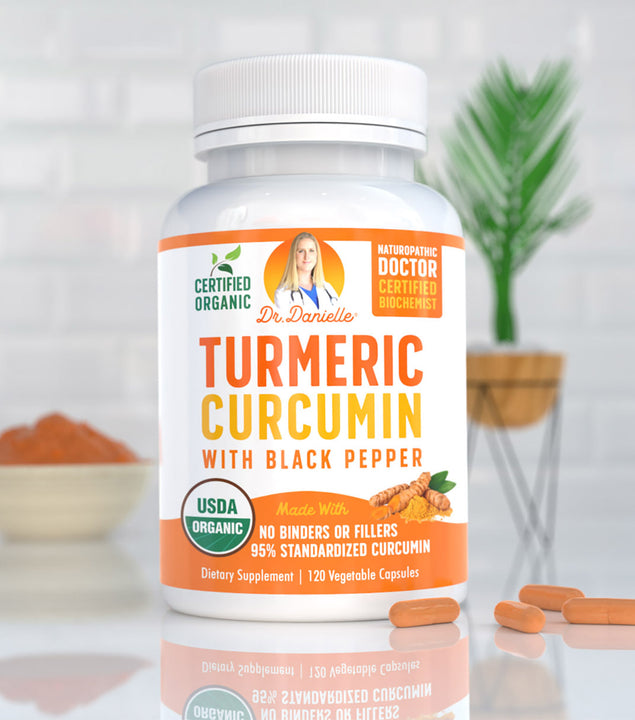What comes to your mind when you think about osteoporosis? For most people, the disease is all about broken bones, hunched postures, loss of height, and frequent falls. In addition to these awfully visible aspects of osteoporosis, it can equally impact your social and emotional health as well.
Often regarded as a silent disease, osteoporosis is the cause of almost 200 million fractures across the globe. Yet, most of these people have little to no awareness regarding its symptoms, risk factors, and management. So if you or your loved one is suffering from it or at risk of developing it, give this article a read so that you can support them in a better way.
What is Osteoporosis?
Osteoporosis refers to a progressive issue of the bones that makes them more fragile with age. As a result, these bones are much more likely to get damaged and even fracture and break. Some of the most common bones vulnerable to osteoporosis-induced changes include the spine, hip, and wrist.
If you are not already aware of it, bones are actually considered a a living tissue that keeps replacing itself throughout life. As the old bone cells wear out and die, they are quickly replaced by the newer ones. But as you approach the later stages of life, the body is unable to perform these renewals as frequently as it used to, leaving the bones more fragile.
But why do you need to educate yourself about this problem? Because according to surveys, every 1 in 5 men and 1 in 2 women will fracture a bone secondary to osteoporosis in their lives. So protect your bones while you still can.
Are You at Risk of Osteoporosis?
Multiple factors put you at risk of developing osteoporosis. These include:
A positive family history
You are automatically more likely to develop osteoporosis if one of your parents has it.
Aging
As you enter your 50s, your osteoporosis risk automatically increases by a significant number.
Gender
Women are more likely to develop osteoporosis than men. This is because the former have smaller bones and the fact that they gradually lose their primary bone-supporting hormone i.e. estrogen during later stages of life. Also, women tend to perform less weight lifting exercises than men throughout their lifetime.
Low body weight
People with a body mass index of less than 19 are at an increased risk of developing osteoporosis and fractures due to a possible lack of bone-strengthening nutrients and minerals.
Medical conditions
Having certain types of medical conditions can automatically put you at risk of developing osteoporosis. These include Crohn’s disease, hyperthyroidism, and rheumatoid arthritis, to name a few.
Medications
Medicines like steroids are often related to increased brittleness and the weakening of bones. In the long run, it also contributes to osteoporosis.
Unhealthy Lifestyle
If you are a smoker or drinker, practice a sedentary lifestyle, or generally lack vitamin D or calcium in the body, your risk for osteoporosis is already off the charts.
Identifying Osteoporosis

Unfortunately, osteoporosis usually has no symptoms as it is impossible for you to physically feel your bones getting weaker. This is the reason why it’s known as the “silent disease” that easily goes undetected for years, unless you break a bone. However, in a small number of cases, you may feel the following symptoms:
- Loss of height
- Any curving of the spine
- Severe pain in back
If any of the symptoms raise suspicion for osteoporosis, get in touch with your doctor at once.
How is Osteoporosis Managed?
Your doctor is likely to conduct a one-to-one session to discuss your current and past health and medical history. They may also run some tests to rule out any possible causes leading to osteoporosis. If any strong reason is found, you might be referred for a DEXA scan which is an x-ray to check the bone mineral density.
Once a diagnosis is confirmed, the doctor then works closely with you to formulate a plan. In most cases, the plan normally includes a combination of medicines and lifestyle changes.
Medicines
Bisphosphonates are the commonest drugs used to manage osteoporosis. These medicines work by reducing the loss of any further bone mass. They can either be given orally or through injection depending on circumstances. In addition to alendronate, you may also be prescribed hormonal therapies to rejuvenate bone health.
Lifestyle changes
Osteoporosis and lifestyle changes go hand in hand. You cannot expect to overcome this problem without making any positive changes in how you live your life. For this purpose, the following tips are to be kept in mind.
- Eat calcium-rich foods
You must already know how important calcium is for bones. After all, there is a reason why mothers have always been forcing kids to drink milk every night. Unfortunately, the body’s natural ability to absorb calcium from food tends to decrease with age. So it’s important to ensure that you always have adequate levels of this nutrient in your body.
Make sure you are getting 700mg of calcium every day through foods like cheese, milk, yogurt, dried fruit, and leafy greens. My favorite being the leafy greens! For healthier non- dairy options, think kale, bok choy, broccoli, almonds, sesame and chia seeds, fish (such as salmon and sardines), tofu, and soy milk to name a few. You may consult a doctor to know about other different ways to improve your calcium intake.
- Get enough vitamin D
Whenever you are trying to get more calcium, always do it with vitamin D side by side. Without enough vitamin D in the body, you cannot expect to absorb calcium no matter how many glasses of milk you decide to drink every day.
Most of the vitamin D in the body is manufactured on the skin in the presence of sunlight. So spending some time outdoors is a great way to begin loading up on this sunshine vitamin. However, make sure not to overdo it and burn your skin in the process. You may also eat vitamin D-fortified foods including cereals. Another great way to improve your vitamin D levels is by enjoying Dr. Danielle’s delicious vitamin D gummies every day.
Vitamin D helps your bones absorb calcium. If you don’t get enough vitamin D then your body doesn’t absorb the calcium needed for strong bones. Talk to your doctor regarding your need to take a vitamin D supplement if you live in colder areas with no sun.
- Maintain a healthy body weight
Maintain a healthy weight to keep your bones healthy. Keeping a healthy body weight can help you keep your bones healthy. Low body weight means you have smaller bones that tend to be more fragile. It also means there’s little body fat and muscle to protect you if you fall. In addition, if you’re malnourished, as well as not getting enough energy from your diet, you may not be eating enough nutrients that help build healthy bones.
- Quit smoking and cut your alcohol intake
Research shows that both smoking and regularly drinking too much alcohol can lead to bone loss and increase the risk of a broken bone. Smoking in any amount is bad for bones.
If you’ve been a smoker or heavy drinker in the past then your bones may have been weakened to some extent. Getting enough calcium and vitamin D, taking regular exercise, and having a healthy weight is essential.
- Physical Activity
Physical activity has many benefits to your bones and good osteoporosis health, muscle strength, and overall health. However, this does not mean that you should just join a gym and start doing any exercise you like. What you incorporate in your life must be tailored according to your body’s needs and focus on the management of osteoporosis without hurting you in the process.
There are many different types of exercises that you can safely perform even if you have osteoporosis. You can also discuss it with your doctor or a physical therapist to decide which plan would best suit you. Walking is one of the best activities that you can do to manage osteoporosis symptoms, provided you are taking all measures to avoid falls. So whenever you head out to walk, make sure you are wearing proper shoes with non-slip soles and the weather is suitable. If possible, have someone accompany you in case something happens.
If you have to go to crowded places like the movies or a mall, choose a time slot that’s less busy than usual. Avoid indulging in constant physical exertions and always remember to take breaks in between as frequently as your body demands. Do not try to do too much at once. You can still perform all your favorite activities by carefully breaking them down into different, shorter segments.
- Manage pain naturally
If medicines alone aren’t helping you out, try using hot or cold packs to control your joint pain associated with osteoporosis. Take hot showers or put hot packs on your stiff, aching muscles to get good relief. Alternatively, you can also use cold packs to numb the pain-sensing nerves and get relief.
Depending on whichever way works best for you, apply the cold or hot packs on the affected area for up to 20 minutes. Use an extra layer of a towel between the pack and your bare skin to protect it from too much heat or cold.
Outlook
Osteoporosis may seem like a regular illness but it can have serious effects on your health. It can lead to frequent falls which are not only painful, with long-lasting impacts, but may also complicate and worsen the situation for you. However, the good news is that there is a lot you can do to manage this condition or even prevent it in the first place. To do that, you must ensure that you are taking all prescribed medications and are willing to work on your lifestyle.
If you think that you are at risk of developing osteoporosis, get in touch with a doctor as soon as you can. Together, you can formulate a strategy to prevent or overcome it while reducing the risk of complications.









1 comment
Does taking collagen help build and maintain your bones? IF so what are the best types?
Thank you Have a great day!!!
Marsha